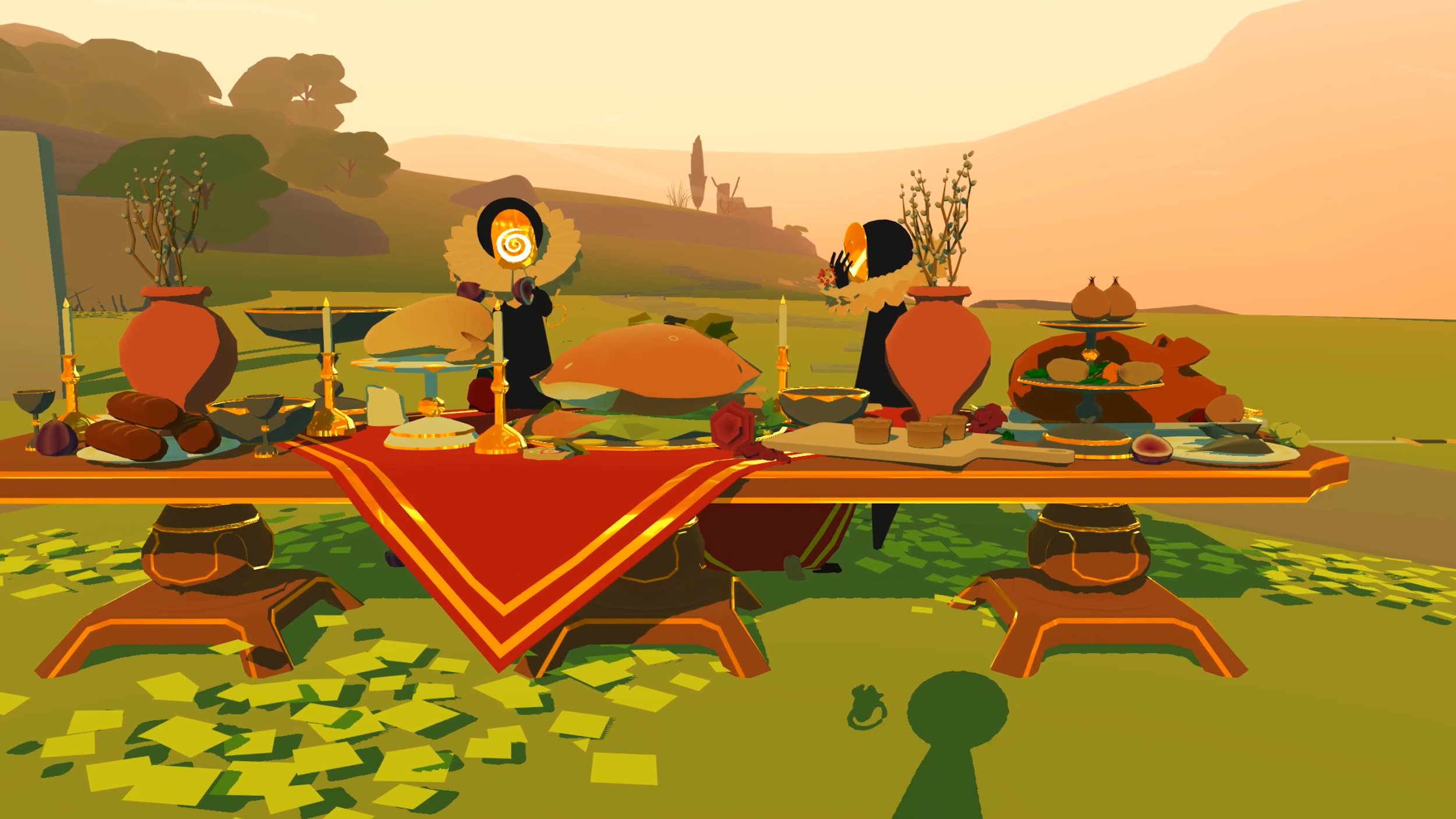There’s a lot we don’t know about COVID-19, but we do know one of the easiest ways to catch the virus is by spending a long time indoors with people. This puts certain businesses, like theaters, in an incredibly tough spot that seems unresolvable before a vaccine arrives. For Hollywood, one of the solutions is simply charging more for people to watch movies at home, but what about live theater? One solution: move the theater into the virtual world.
Tender Claws played with this idea last year in The Under Presents, a combination of sandbox and scripted experiences where players interacted with characters played by a mixture of pre-recorded performances and live actors interacting with players in real-time.
Videos by VICE
The Under Presents: Tempest, which launched last week for Oculus devices and is inspired by the Shakespeare play The Tempest, is a hair more ambitious. It’s the same idea—a mixture of the pre-scripted and live actors—but what’s particularly unique is how Tender Claws hopes to make money. You can’t experience Tempest whenever you want. Instead, like a real in-person performance, it happens at certain times and you have to buy a ticket.
“We were scheduled to wrap up parts of the live component of The Under [Presents], and COVID hit,” said Tender Claws co-founder Samatha Gorman in a recent interview. “One of the things we wanted to do was to help, as theaters were shutting down, keep our actors afloat and being able to work in this environment.”
In New York, Broadway will be closed the rest of the year. It’s a similar situation nationwide.
$15 buys a single-use ticket for Tempest, which Tender Claws said lasts about 40 minutes. You’re matched with between six and eight others. Multiple performances are happening at the same time, and there’s no way to actually “sit” with friends in the same performance.
Actors who participate in Tender Claws’ performances also strap on a headset, but the difference between players and actors is the toolset available to those in control. The options depend on the event, but actors can change their appearance, trigger events in the world, and more. Part of the challenge for actors is making accessing these tools seem natural.
“The actor powers are kind of like an instrument that you pick up and learn to master,” said producer Eli Bork.
Gorman described the tools as “like a puppetry rig.”

“You don’t want to make it look like they’re looking at menus on their hands, even though they’re triggering a lot of the lighting, props, [and] effects,” said Gorman.
In The Under Presents, which had a large undirected sandbox component, the developers basically let the actors have free reign over their appearance and how they played with the world. They went wild. In Tempest, there’s more restrictions over those specific details, partially to ensure the story is told properly and partially to give actors less to worry about.
“It’s funny, the similarities between The Tempest being a story of an illusionist conjuring illusions,” said actor Terence Leclere, who’s participated in both stories by Tender Claws. “And essentially, as actors, we’re doing the same thing.”
Leclere didn’t have extensive experience with virtual reality prior to connecting with Tender Claws for The Under Presents, but importantly, Leclere had worked in immersive theater stories like The Tension Experience and Theater Macabre. There’s a lot of overlap there.
“How cool and strange [that] we get to put on these VR headsets and bring to life NPCs in this multiplayer game?” said Leclere, “because that’s basically how I approach immersive interactive events and theater experiences.”
Anonymous people can be assholes, however, and virtual theaters are not immune. We spoke prior to the launch of Tempest, but the developers told me trolling wasn’t a huge problem during The Under Presents. There are tools to deal with players, such as placing them in a cage for a few minutes or booting them from the story, and allowing an actor to remove themselves from a scene if they feel uncomfortable. In Tempest and The Under Presents, players can’t speak. They have forms of interaction, but the actors are in control.

They’ve actually had the opposite problem, where players suspect someone is attempting to disrupt. They’ll conjure swords and shields and stand in-between the rogue player and an actor. This tends to be more disruptive than the person who may (or may not!) be goofing off.
No matter what happens in a performance, though, it has something unique in our COVID-19 world: genuine person-to-person interactions.
“At first, it was a way to connect with people in a virtual landscape, eliminating distances geographically,” said Leclere. “But now it’s even more precious because you get to connect with people in a way that is, still for now, dangerous.”
The ultimate question of whether Tempest is a success, however, has much to do with accomplishing its noble and stated goal: putting money in the pockets of performers.
A Tender Claws representative told me they’ve sold out of every show, and that “actors are being paid at competitive rates with in-person immersive theater.” The company would not elaborate on what a “competitive rate” is, and the numbers VICE Games heard from actors and talent managers familiar with interactive theater varied, based on geography and the size of the production. $100 per show was described as fairly average for sizable events, but it’s unclear whether Tempest would fall into that category.
Given Tempest just launched, it may be a little while before we have an answer.
Follow Patrick on Twitter. His email is patrick.klepek@vice.com, and available privately on Signal (224-707-1561).
More
From VICE
-

(Photo by Daniel Knighton/Getty Images) -

Photo by Gie Knaeps/Getty Images -

(Photo by Chris Marion/NBAE via Getty Images) -

Screenshot: Epic Games
